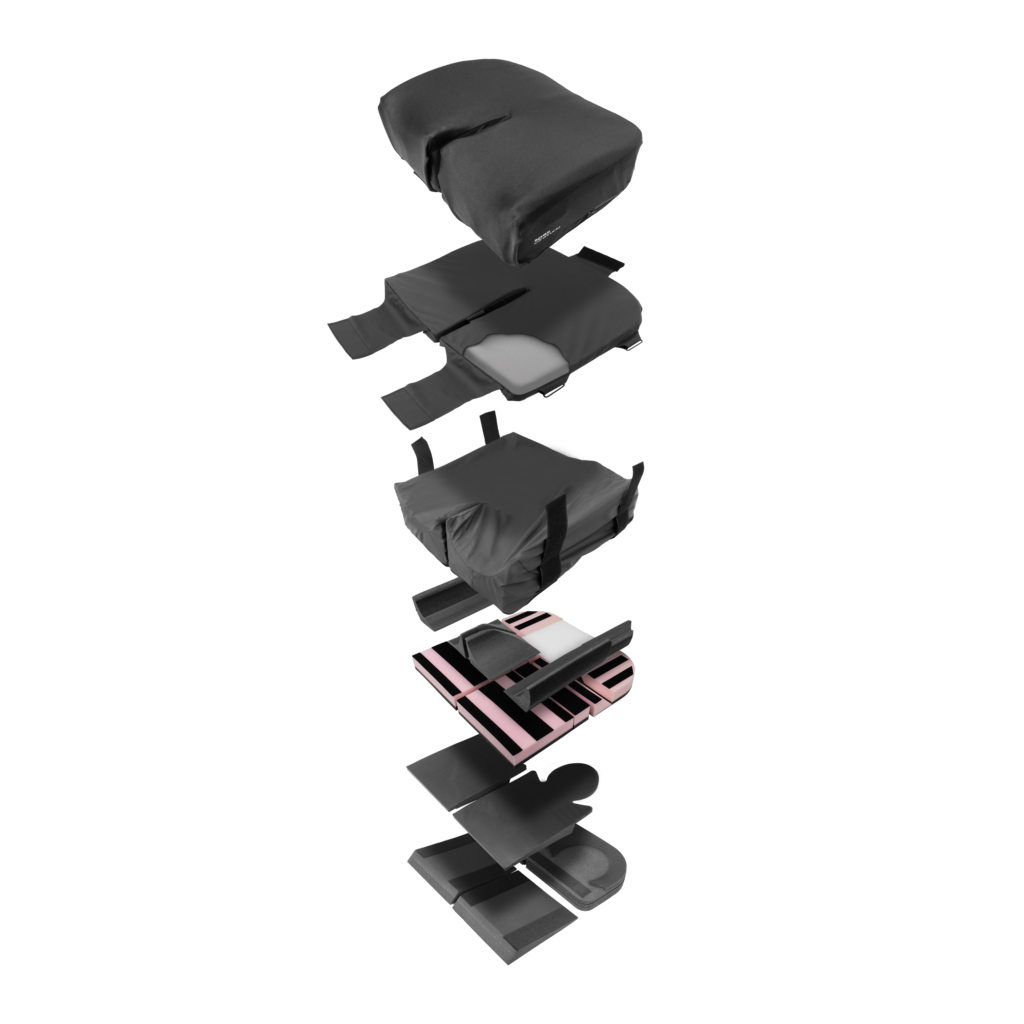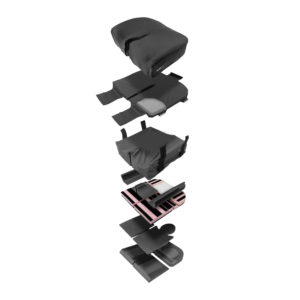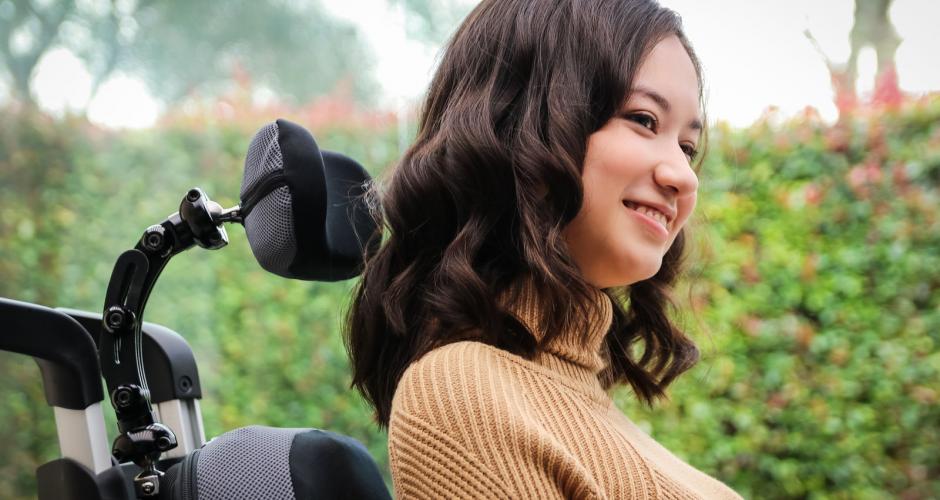This article is for wheelchair users and prescribers of wheelchairs who want to understand more about why a head support may be required and how to justify the need.
What is the purpose of a head support and what are the benefits?
The head support on a wheelchair serves a variety of functions.
|
|
|
|
|
|
How do you choose a head support?
First of all, prescribers may focus on the seat cushion and back support as these are the main weight-bearing surfaces in sitting (with foot supports). But our heads can also lead the movement and, specifically for neurology practitioners, we consider the head to be a key point of control to affect what happens in the body. In this way, the head can affect the alignment of the body too – either through reduced alignment because of tone, or because of reduced support due to impaired muscle control. We need to understand what is happening in the body and at the head and neck. This is why a mechanical assessment of joint range and tone is required in addition to understanding other factors that may be present and the goals of the wheelchair user when in the chair.
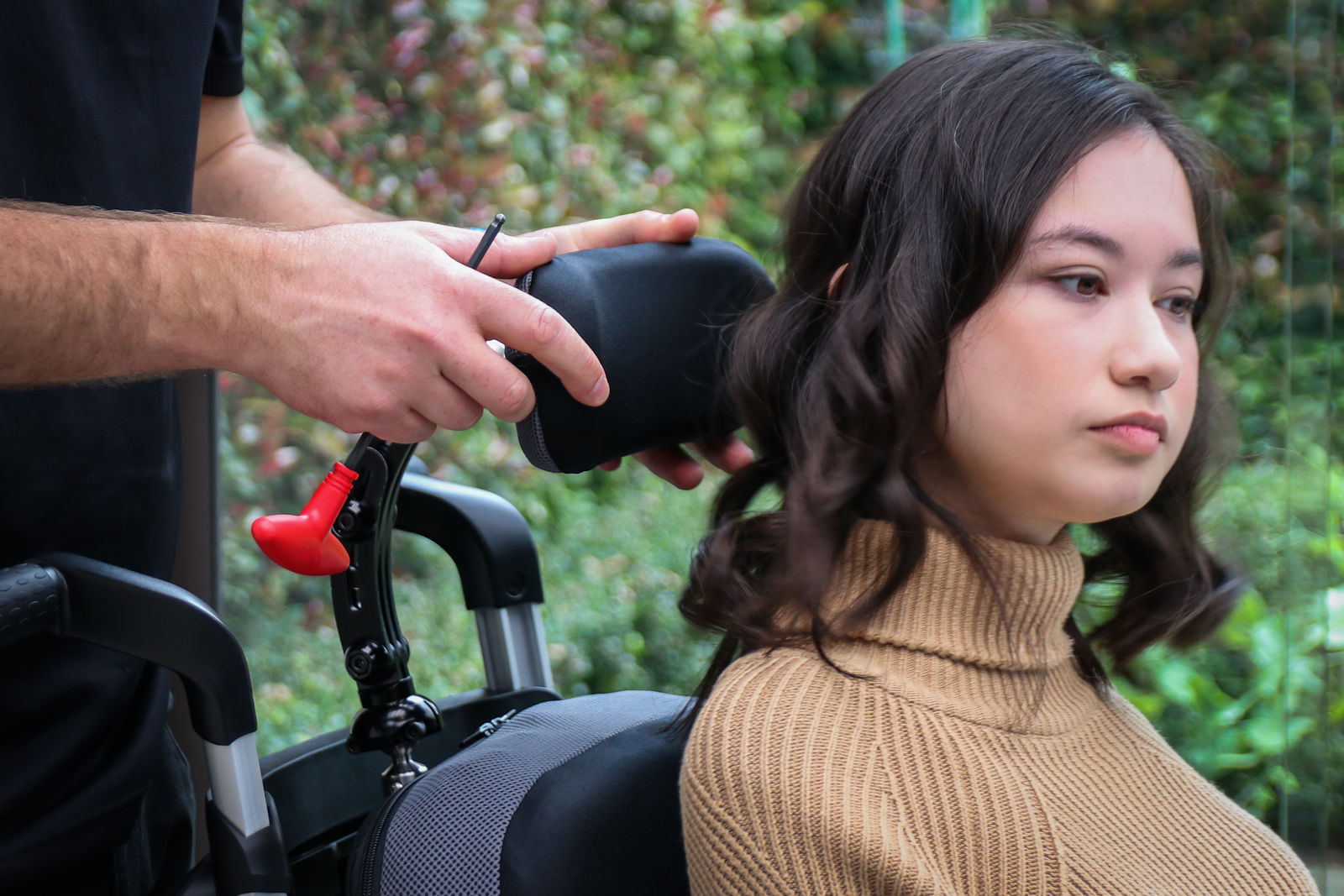
Some assessment elements may include:
- Joint restrictions or joint protection required,
- Types of activities that the person needs to perform whilst in the wheelchair and the head position required to enable this (e.g., driving a powered chair and being able to scan the environment sufficiently),
- Uncontrollable movements that may be present due to fluctuating tone,
- Duration of sitting in the wheelchair and ability to manage pressure (this may affect whether the chair needs to incorporate tilt for skin integrity management),
- Any hypersensitivity to the head or neck,
- Understanding if there are any swallowing impairments that may need to be considered, and
- How someone may choose to have their hair styled (yes, sometimes having a low ponytail can reduce comfort when using some head supports).
Understanding the person, the biomechanical need, and the head support options available will ensure the best ‘fit’ to promote function and comfort for the wheelchair user in the wheelchair.
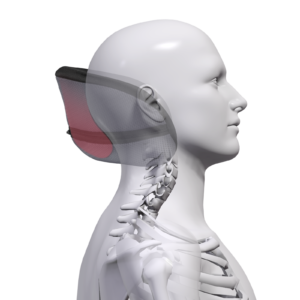 |
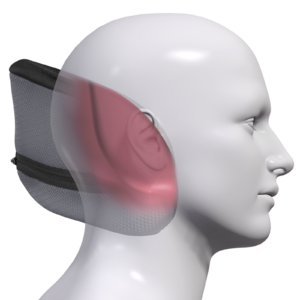 |
Secondly, when you are supporting the head, where are your hands placed to provide the best support?
- Are you cupping the back of the head (parietal/occipital support)?
- Are you providing any support under the occipital bone to reduce the weight of the weight or cradle the occipital bone (sub-occipital and occipital support)?
- Are you cradling the head in both your hands to provide support to the side of the head either low down or higher up (sub-occipital/temporal or sub-occipital/parietal with higher temporal support)?
- How are you spreading the load (fingers splayed or together)? This helps to guide shaping and padding selection for pressure distribution.
- Do you have to provide directed lateral (side) support too?
What does the shape have to do with it?
Let’s consider the anatomy of the skull:
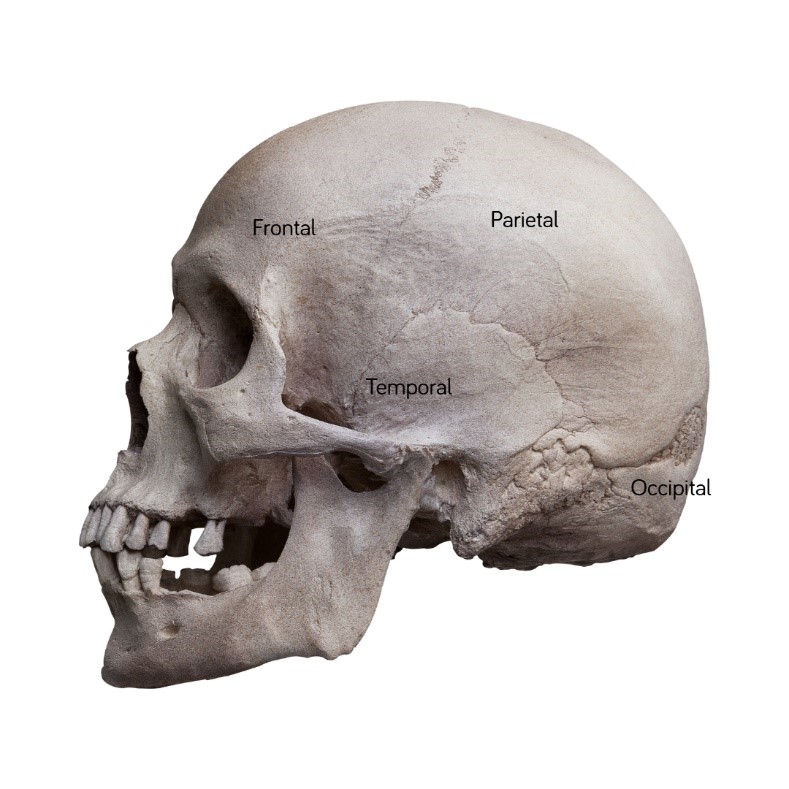
The occipital and parietal bones of the skull are most likely to have contact with a head support.
- These are not flat, but curved (see images below). A flat head support pad may result in the wheelchair user experiencing discomfort because of pressure being focused on a small area at the back of the skull. Consider the pressure under a stiletto heel v.s the pressure under a broad boot sole.
The occipital bone has a number of muscles that attach to it for head movement and control:
- The occipital bone has a number of muscles that insert onto it that allow for lateral flexion of the head (when you bring your ear down to your shoulder without twisting the head), rotation of the head (when turning the head side to side), tilting the head up and to the side, and when you extend the neck (tilt your head back to look up at the ceiling),
- The occipital bone has an occipital protuberance which we can feel at the back and base of our skull – like a small ridge. This is the insertion point for a number of muscles that keep the head upright and, when contracted, tilt the head back (neck extension). These muscles extend to our spinal column, the shoulder blade, and collar bones, to provide a muscular support structure for stability. Muscles can become stiff or tight and we may experience headaches, or the inability to move our heads easily when this occurs. When a wheelchair user’s musculoskeletal system is impaired, we need to consider how the head can move without pain and what support is required to provide stability without restricting movement.
The skull has little padding around it and therefore the head support may need to allow immersion and envelopment to off-load pressure and optimise comfort (see Figure B).
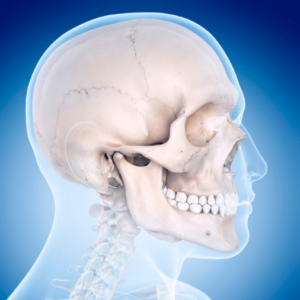 |
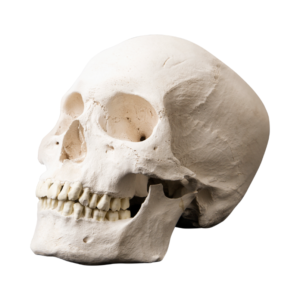 |
| Figure A: Lateral (side) view of the skull within the soft-tissue | Figure B: Illustrating the curve of the skull that needs to be accommodated and responded to within a head support pad |
Our heads are heavy. An adult head can weigh between 5 – 6.3 kg, including the 22 bones that comprise it and the teeth, brain, and soft tissues. This is a lot of weight. Gravity provides a downward force constantly, which our postural muscles need to withstand to stay upright, so our bodies (secretly) do a lot of work for our entire bodies and heads to remain upright when standing or sitting. With impaired musculoskeletal function or neuromuscular control, our head requires additional scaffolding to allow the body to remain upright and optimally aligned. We can provide support sub-occipitally (below the occipital bone) and around the skull below the temporal bone to create a scaffolding platform to reduce the weight of the head.
The key to ensuring optimum support is that:
- The head support size is considered (a child will need a smaller head support than an adult).
- The pad is soft enough to provide immersion and envelopment for pressure distribution, yet supportive enough to reduce the weight of the head if providing sub-occipital support.
- The head support pad shape conforms to the shape of the skull whilst still affording biomechanical responsiveness to oppose unwanted movement (for example in the instance of high tone where the head is being pulled to the side). For this reason the head support shapes need to be considered as head support pads provide provides particular biomechanical responsiveness.
- The ears are not squeezed when the head turns within/against the chosen head support.
- The head support does not compromise functional movement – it should optimse motor control and postural stability.
Why is the head position important?
This may seem obvious, but how we hold our heads affects others perceptions of us, our ability to interact with the world, and, yes, even our ability to swallow. We experience the world using our heads and our senses of taste, smell, sight, hearing, and touch. We use our hands, eyes, and mouth to explore. We smile and wink and raise our eyebrows to communicate all manner of emotions. Our head alignment and vestibular (balance) system informs our brain of whether we are upright or lying/tilted. Our eyes like to be parallel to a horizontal surface. When we are upright we are more alert than if we are tilted back or lying down – we want to optimise this alertness in order to promote engagement and communication. Head position is very important to optimise function and quality of life.

What can Spex provide?
Bruce Mascull, General Manager of Spex Seating, recently provided a useful resource looking at the Spex Head Supports. I would encourage you to read this as this highlights the types and sizes. They include sub-occipital contouring for optimum comfort and stability, lateral support, and off-loading of the ears. If you are considering using a Spex head support and want more information or an assessment, please contact your local Spex Distributors or the Spex Clinical Educators.
